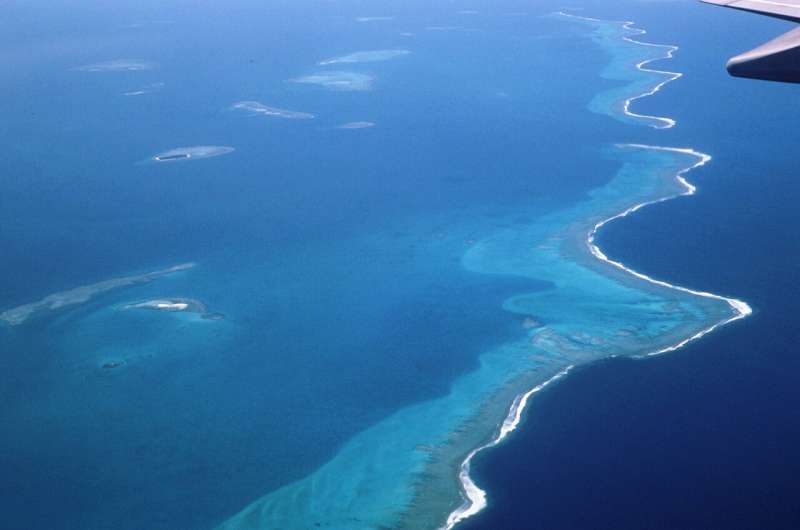Improving ocean protection with the first marine protected areas guide

An international team, which includes researchers from IRD and CNRS, published a novel Marine Protected Areas (MPA) guide in the journal Science on 9 September 2021. The aim is to advance the global community's understanding of ocean protection and achieve global goals to halt marine biodiversity loss.
The International Union for Conservation of Nature (IUCN) defines an MPA as "a clearly defined geographic space, recognized, dedicated and managed, through legal or other effective means, to achieve the long-term conservation of nature with associated ecosystem services and cultural values." While MPAs play a central role in ocean conservation, not all MPAs are the same. There are a wide variety of MPAs with various goals and regulations. For example, some MPAs allow fishing, aquaculture and anchoring, while others do not. Furthermore, some MPAs exist but are not effectively implemented. In the absence of guidance on how to categorize MPAs or determine their likely benefits, there is considerable inconsistency at the global level, which leads to confusion and makes it difficult to accurately measure the outcomes and how much ocean protection actually exists worldwide.
To address these challenges, 43 specialists in marine and social sciences, from 39 institutions across six continents, have published the first-ever MPA Guide in the journal Science. It provides a novel scientific framework to consistently plan, map out, evaluate and monitor the achievement of MPA goals.
An integrated approach to MPAs
There are four components to the MPA Guide. First, it specifies an MPA's stage of establishment: whether it is proposed/announced, qualified, implemented, actively managed. It is important to clarify the stage of establishment since biodiversity is not safeguarded in an MPA until it is implemented, respected and actively managed.
Second, the guide provides a simple method for categorizing MPAs based on their level of biodiversity protection: full (no extractive or destructive actives are allowed); high (only light extractive activities are allowed and other impacts are minimized as much as possible); light (some protection exists, but moderate to significant extraction and impacts are allowed); minimal (extensive extraction and other impacts are allowed, while still providing some conservation benefits).
Third, the guide sets out enabling conditions that provide the principles and processes needed to plan, design and manage a successful MPA. Lastly, the guide describes the social and conservation outcomes that can be expected from an MPA at a particular stage and level, when the enabling conditions are in place. For example, fully-protected or highly-protected MPAs can result in an increase in abundance and size of previously exploited species, the restoration of ecological interactions and habitats, improved reproductive output, greater resilience in the MPA and greater potential for adaption to climate change and other environmental changes.
"This guide provides the global community with a unified structure, shared language and consistent approach to at last provide an evidence-based understanding of where we stand on ocean protection," said Kirsten Grorud-Colvert, Associate Professor at Oregon State University and lead author of the guide.
"This guide comes at a key time, as countries prepare to negotiate the target of protecting at least 30% of the Earth's land and oceans by 2030 at the Conference of the Parties at the Convention on Biological Diversity (COP15), which will be held in China in 2022," said Joachim Claudet, CNRS Research Director and co-author of the paper.
"Marine Protected Areas will not only contribute to protecting marine biodiversity, but will also help mitigate climate change by protecting coastal areas and increasing carbon sequestration by marine organisms. We need healthy ecosystems and living organisms in order to tackle the major challenges that lie ahead," said Philippe Cury, Research Director at IRD and co-author of the paper.
Guiding decision-making
The MPA Guide is meant to be a living document and will be continually assessed and adjusted. National trials are already underway in France, Indonesia and the United States, where MPA experts are using it to analyze and categorize existing areas to help communities and governments make informed decisions.
"The MPA Guide has been designed to complement existing systems, such as the IUCN Protected Area Categories," said Dan Laffoley, co-author of the paper and Marine Vice Chair of IUCN's World Commission on Protected Areas, a lead partner on the MPA Guide. "It gives a complete picture of the protection provided by an MPA and will be useful from local to global levels as countries scale up ocean protection."
More information: Kirsten Grorud-Colvert et al, The MPA Guide: A framework to achieve global goals for the ocean, Science (2021). DOI: 10.1126/science.abf0861
Journal information: Science
Provided by Institut de Recherche pour le Développement (IRD)


















